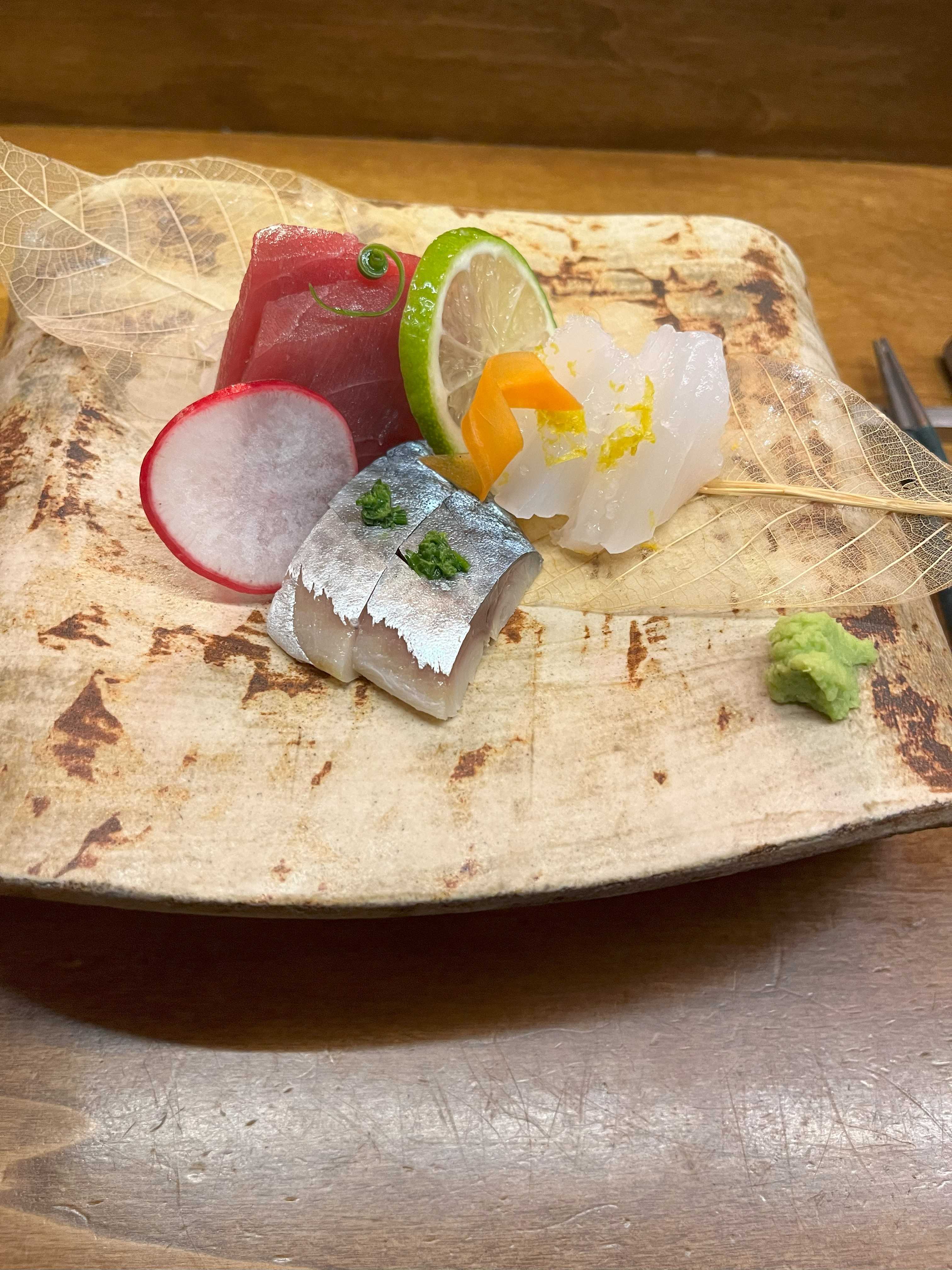I was in a work trip to Cascais, a small tourism town by the ocean close to Lisbon. The restaurant is in a relative quiet area in the central Cascais. I was curious, when booking the seat, what an omakase looks like in Cascais. Though it turned out to be just an “omakase style”, it was a fun and relaxing experience in general and the chef really tried his best to follow the japanese styling.
The menu is very simple: sashimi and sushi, plus the rest, namely some starters and desserts.
 All the starters apart from Chawanmushi (steamed egg, and picture not given) came together as a small set.
The set was well presented, including Nori (seaweed roll), Kani (crab), Usuzukuri (a small sashimi, I think here it was tuna), Furofuki (Daikon, I believed the menu has a typo here) and Uni (sea urchin).
The seafood parts were all light seasoning, and emphasised the freshness of the ingredients.
I got a handful of caviar on top of the seaweed roll, sure, making it look posh and expensive.
Sea urchin was creaming as expected, and, besides, the chef presented it in a thick soup base.
Daikon was probably my favourite, firstly, because I personally like the taste of daikon anyway.
Second, it was the only dish that was fresh bitterness, rather than fresh seafood sweet; and yes, I like a bit of bitterness in this level of dinning.
All the starters apart from Chawanmushi (steamed egg, and picture not given) came together as a small set.
The set was well presented, including Nori (seaweed roll), Kani (crab), Usuzukuri (a small sashimi, I think here it was tuna), Furofuki (Daikon, I believed the menu has a typo here) and Uni (sea urchin).
The seafood parts were all light seasoning, and emphasised the freshness of the ingredients.
I got a handful of caviar on top of the seaweed roll, sure, making it look posh and expensive.
Sea urchin was creaming as expected, and, besides, the chef presented it in a thick soup base.
Daikon was probably my favourite, firstly, because I personally like the taste of daikon anyway.
Second, it was the only dish that was fresh bitterness, rather than fresh seafood sweet; and yes, I like a bit of bitterness in this level of dinning.
 Then I got the sashimi, containing mackerel, squid and maguro (tuna).
The waiter mentioned that they provide a high end soy sauce imported from Japan and and explained that if I should dip into soy sauce or/and use wasabi for each type of fish.
Frankly, I could not remember the suggestion and just use the soy sauce without wasabi for all.
The maguro (tuna) was really rich and fresh and squid was interestingly sweat.
I would say a good combination from light to strong flavours.
Then I got the sashimi, containing mackerel, squid and maguro (tuna).
The waiter mentioned that they provide a high end soy sauce imported from Japan and and explained that if I should dip into soy sauce or/and use wasabi for each type of fish.
Frankly, I could not remember the suggestion and just use the soy sauce without wasabi for all.
The maguro (tuna) was really rich and fresh and squid was interestingly sweat.
I would say a good combination from light to strong flavours.
 The sushi was made and served, as expected, directly by an chef, in the order from light and white fish to strong and rich-flavour fish.
All sushi were nicely done, so I enjoyed a lot.
However, I feel the chef was a bit rush, hence I actually called a pause half way.
Maybe the chef should control the pace better by leaving some gap time between sushi.
The sushi was made and served, as expected, directly by an chef, in the order from light and white fish to strong and rich-flavour fish.
All sushi were nicely done, so I enjoyed a lot.
However, I feel the chef was a bit rush, hence I actually called a pause half way.
Maybe the chef should control the pace better by leaving some gap time between sushi.

Kappo is a nice restaurant in this mostly tourism town. It benefits to be the only Japanese restaurant in the area, and a high-end one, therefore, I think it is a successful restaurant. Indeed, it was busy the evening I visited. However, the menu was pretty much a set menu with potentially some changes on the sashimi and sushi based on the availability of fishes.
